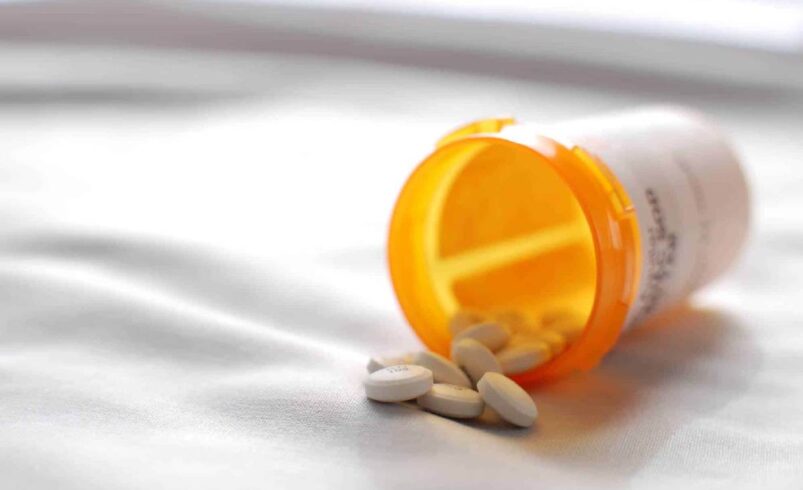Klonopin, known as Clonazepam, is a benzodiazepine that may take up to six to nine days in the body. The generic version of Klonopin is the clonazepam, which is a prescription medication that is usually given in panic, anxiety and seizure disorder treatment. This paper will discuss the duration in which a drug is expected to stay in your system and the issues that can affect the time it takes to safely get a drug out of your system. Concisely, Klonopin or Clonazepam may be used as long as six to nine days in your system.
Klonopin’s Long Half-Life
Clonazepam has a long elimination half-life. The elimination half-life refers to how long it takes for half of a single dose of a drug to leave the body. For clonazepam, its elimination half-life ranges from30 to 40 hours. This means that it will take between one to two days for just 50% of Klonopin to leave your system.
It can take roughly 5 half-lives for a drug to completely leave your body. Based on the estimate of clonazepam’s 30- to 40-hour half-life, Klonopin is likely to stay in your system for approximately six to nine days after your final dose. Both Klonopin and its metabolite 7-amino-clonazepam are detectable in the urine for about four days after the last use.
Variables That Influence How Long Klonopin Stays in Your System
On average, Klonopin takes six to nine days to leave your system. However, it depends on the person using the drug. Some variables that influence how long it takes to leave your systeminclude:
- Age
- Liver function
- Dosage (low vs. high)
- Frequency of use
- Duration of use
- Use of other drugs
Will Klonopin Misuse Show on a Drug Test?
Like other benzodiazepines, Klonopin isdetectable on a standard drug test. If you’re taking Klonopin as prescribed by a doctor, you’ll need to bring a doctor’s note with you to your drug test.
How Long Does Klonopin Take to Peak?
The desired effects of Klonopin typically become noticeable withinone to four hoursof taking the medication orally. This is why it isn’t typically prescribed for the short-term treatment of panic or anxiety. Medications such as Xanax and Ativan are much more effective for the treatment of these disorders since they start working within minutes.
Klonopin Withdrawal Risks
As stated previously, knowing how long a drug can stay in someone’s system can help identify a possible addiction or overdose situation or can help calculate the time someone may withdrawal from the drug and seek medical help.
Someone who has taken Klonopin regularly and then tries to stop cold turkey may go into withdrawal.Benzo withdrawalcan be very dangerous if the person is not receiving medical care. Since Klonopin enhances the effects of GABA, calming the central nervous system, withdrawal means the opposite occurs, and the central nervous system gets over-excited. This can lead to effects,including:
- Seizures
- Hallucinations
- Shaking
- Stomach cramps
- Muscle cramps
Klonopin Overdose
Anyone who takes more than the recommended dose of Klonopin or takes the recommended dose too frequently is at risk of overdosing. There are several risk factors that increase the likelihood of overdose, including using multiple drugs, other psychiatric illnesses and addiction.
Taking too much Klonopin can cause dangerous physical effectsincluding:
- Somnolence
- Confusion
- Coma
- Diminished reflexes
If you or someone you know experiences these symptoms after taking Klonopin, call 911 immediately.
Getting Treatment for Klonopin Addiction
Once a person becomes addicted to Klonopin, it can be very difficult to stop. People who use the drug regularly and for long periods of time often experiencewithdrawal symptomswhen they stop using, which is why they continue using even if they want to stop.
Recovery from clonazepam addiction is possible. The first step to getting help is admitting to yourself that your Klonopin use is no longer healthy. It’s easy to downplay the seriousness of your addiction. Many people find it hard to confront their addiction.
By entering anaddiction treatment facility, you’ll benefit from medically-supervised detox, medication management, treatment of underlying mental health disorders, group and individual therapy and an aftercare treatment plan.
Although recovery may seem impossible, it’s important to know that help is available. You don’t have to go through this journey alone. The Recovery Village provides rehabilitation services for people from all across the country.Contact us todayto discuss treatment options that can meet your needs.
How Long Does Clonazepam Stay in Your System?
Klonopin drug tests do not look specifically for Klonopin but instead look for shared benzodiazepine metabolites. Drug tests are most effective at detecting metabolites of other benzodiazepines like chlordiazepoxide, diazepam, oxazepam and temazepam.
While Klonopin is detectable in drug tests, it tends to produce a high rate of false negatives. Drug tests have a harder time picking up Klonopin use because it has a unique set of metabolites that are not specifically tested in drug tests.
Klonopin drug test detection times range from a few weeks to over a month, depending on the type of test.
How Long Does Klonopin Stay in Your Urine?
Benzodiazepines are detectable in urine for over 30 days. However, clonazepam is probably detectable for much less time because benzodiazepine tests are not looking for the active metabolite 7-aminoclonazepam. Short-acting benzodiazepines are only detectable for one day, so the detection time will vary between 1–30 days. There’s also a high rate of false negatives.
How Long Does Klonopin Stay in Your Blood?
The drug is detected in the blood depending on its half-life. In individuals of normal metabolism, the detection time is between 4-13 days.
Klonopin How long does Klonopin remain in your saliva?
Klonopin is also found within saliva drug tests taking about 5-6 days. Nevertheless, benzodiazepines saliva tests are not very common and have to be ordered.
How Long Does Klonopin remain in Hair?
The hair tests determine how the drug has deposited into growing hair, therefore, the detection window is determined by the speed of hair growth. The hair tests require three months of hair growth or 1.5 inches and are typically able to identify Klonopin during 90 days.
Klonopin and Breastfeeding
An infant that breastfeeds while the mother is taking clonazepam will receive about 2.5% of the mother’s dose. Another study showed that 10 out of 11 breastfed infants had no detectable clonazepam in their system even when the mother was taking Klonopin.
If you take Klonopin, speak with your physician if you are thinking about becoming pregnant or breastfeeding.
Because of its long half-life, Klonopin will likely be present in breastmilk for 1–2 weeks after taking a dose. In several small studies, clonazepam was detectable in the infant several days after drinking breastmilk from a mother taking Klonopin.
Factors Affecting How Long Klonopin Stays in Your System
Clonazepam stays in the body for at least 13 days, but this window can change based on several factors.
Heavy and frequent use increases detection times, and extended-release formulations may be detectable for longer periods. Klonopin will also stay in the system longer for older people and those with liver problems.
Other factors that affect how long Klonopin stays in your system include:
- Amount used
- Age
- Frequency of use
- Formulation
- Method of use
- Overall health
Klonopin is metabolised in the liver. It is due to this that liver dysfunctional people are likely to have slower metabolism of Klonopin, which will probably remain in their system. Time is the sole means of getting rid of Klonopin in the body. The organism has to digest and dispose of it normally. This process can not be made safe and healthy by accelerating it.
False Positives for Klonopin
The following drugs are known to cause false-positive benzodiazepine results:
- Efavirenz
- Oxaprozin
- Sertraline
The above drugs can give a false positive for benzodiazepine tests, and not just for clonazepam.
False positives happen because the structure of the “false positive” is similar to the metabolite that is being tested for. In this case, the above drugs have either a similar chemical structure or a similar 3D shape to the benzodiazepine metabolite being tested for.
If a drug test returns positive, it will be sent to another lab to confirm the positive results. The specimen will be tested with gas chromatography/mass spectrometry (GC-MS). GC-MS is sensitive and specific and can detect the “fingerprint” of individual drugs.
Klonopin has a high false-negative rate and may not show up on tests for benzodiazepines. False negatives are more likely to occur with lower and less frequent use of Klonopin.
Klonopin Withdrawal
All benzodiazepines have the potential to induce withdrawal symptoms once use is stopped. These symptoms can occur in anyone who has developed physical dependence.
Dependence occurs when Klonopin use has changed the structure of neurons in the central nervous system (CNS). The body does this to compensate for steady doses of Klonopin and to help maintain normal bodily functions.
When Klonopin is suddenly stopped, then the body tries to revert to normal functioning and withdrawal symptoms happen during this process. Common benzodiazepine withdrawal symptoms include:
- Anxiety
- Trouble sleeping
- Restlessness
- Agitation
- Concentration problems
- Muscle aches
- Irritability
- Memory issues
Since Klonopin is a long-acting drug, withdrawal symptoms may not start until 2–7 days after the last dose. Symptoms can last as long as 2–8 weeks and even longer in people who have used the drug for several years.
Medical Detox for Klonopin Addiction
Medical detox is advised for people with a Klonopin use disorder. Detox is the period where the drug is leaving the body and withdrawal symptoms occur. Since benzodiazepine withdrawal can last so long, detox may continue after the drug is metabolized.
Medical detox can help people go through withdrawal more comfortably and safely. Withdrawal symptoms can lead to relapse because they are so uncomfortable, so medical supervision can ensure this does not happen.
People withdrawing from benzodiazepines have a high risk of seizures and therefore withdrawal can be dangerous or fatal. In medical detox, the medical staff can adopt a tapering approach where the dosage of Klonopin is reduced gradually, and this approach can reduce the chances of severe withdrawal symptoms. The Recovery Village Ridgefield can be contacted in case you or your loved one has a problem with an addiction to Klonopin. We have addiction professional teams who can assist you to understand the treatment options that would suit you best. Give us a call today.
Getting Treatment for Klonopin Addiction
Once a person has acquired a dependence on Klonopin, it can be very difficult to stop. Those who take Klonopin regularly for a long period will likely encounter unpleasant withdrawal effects when they discontinue use. The discomfort of these symptoms is often the prime reason why a person will continue to use Klonopin even if he or she wants to stop.
It is indeed possible to come out of the addiction of Klonopin but the initial step is the recognition of the problem and getting help. Harmony Treatment and Wellness employs an elaborate, evidence-based strategy of addiction recovery which encompasses psychotherapy, counseling, management of comorbid mental health disorders, group therapy, aftercare planning, and so on.
Assistance is possible in case you are addicted to Klonopin or other substances or a person close to you. You do not need to be suffering on your own, call us today!


